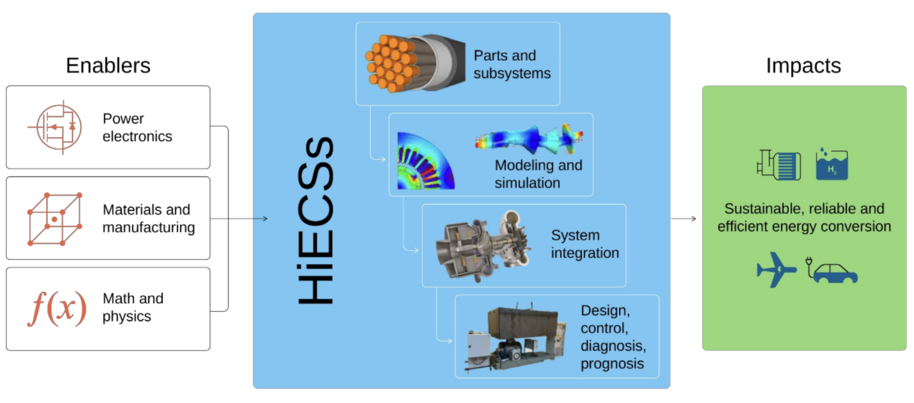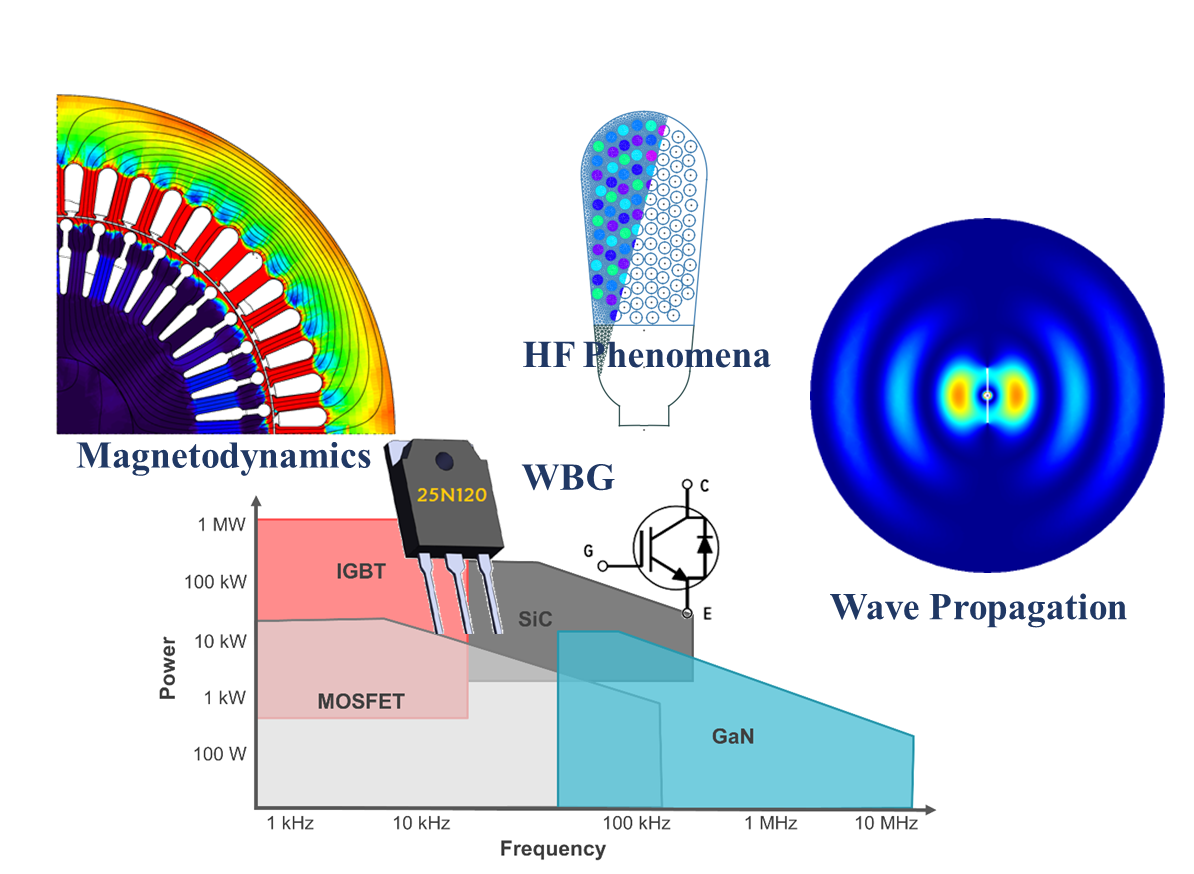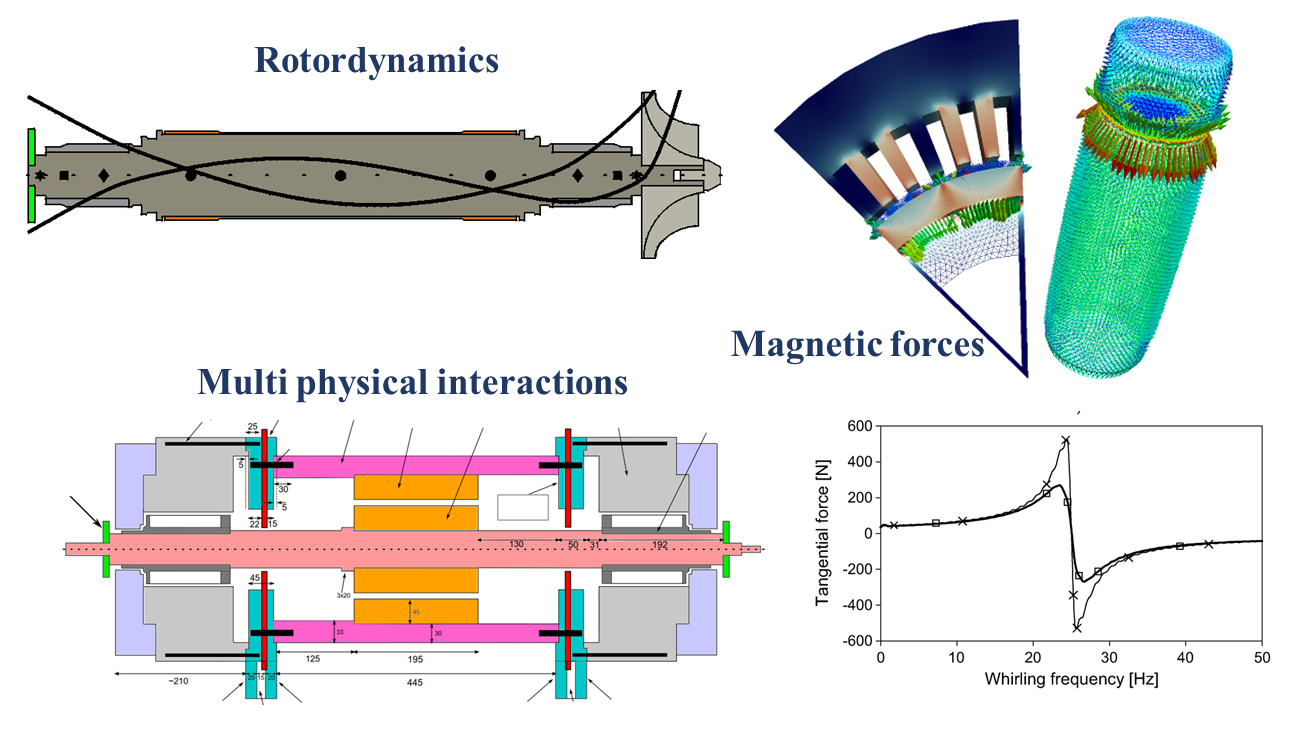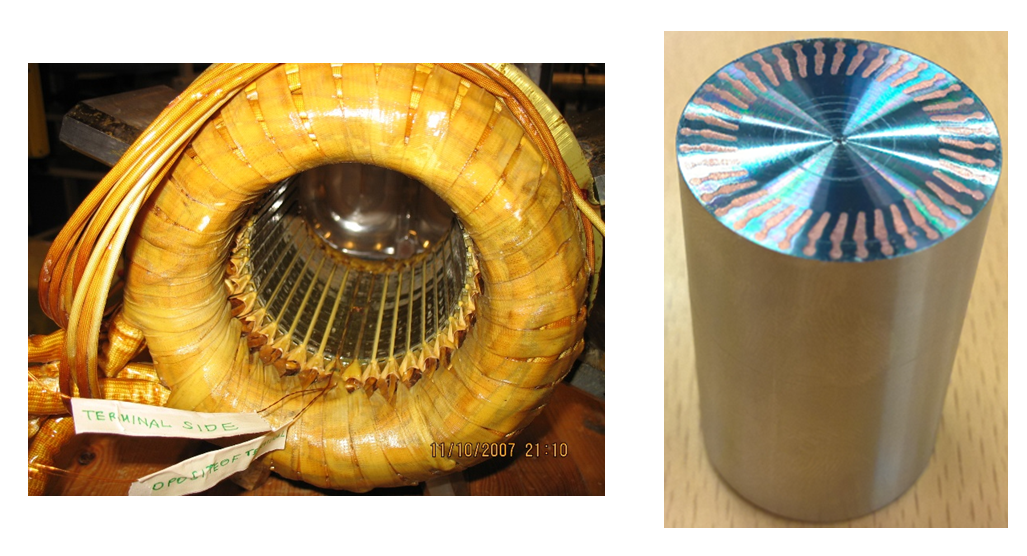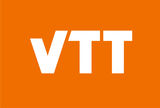Our Research
The 21st-century energy transition is driving the need for new electromechanical energy conversion (EEC) systems, particularly in high-speed (HS) applications. These HS EEC systems (HiECSs) play a crucial role in achieving the EU's vision of a clean hydrogen-based economy by providing the flexibility required for electrification and decarbonization. They are essential for storing and using hydrogen in Power-to-X technologies and rapidly electrifying transportation, including aviation. HS electrical machine (EM) technologies offer a compact and efficient solution for future EEC needs, as higher speeds and frequencies improve material efficiency and sustainability. The recent development of wide bandgap (WBG) semiconductor switching technology has made the realization of the HiECSs objectives feasible. However, challenges arise in modeling and designing HS electromechanical drivetrains as the interaction of different components must be considered. The center of excellence (CoE) formed by Aalto University, LUT University, Tampere University, VTT Technical Research Centre of Finland, and CSC - IT Center for Science aims to overcome these challenges and advance the scientific understanding and technological breakthrough for the energy and aviation industries.
